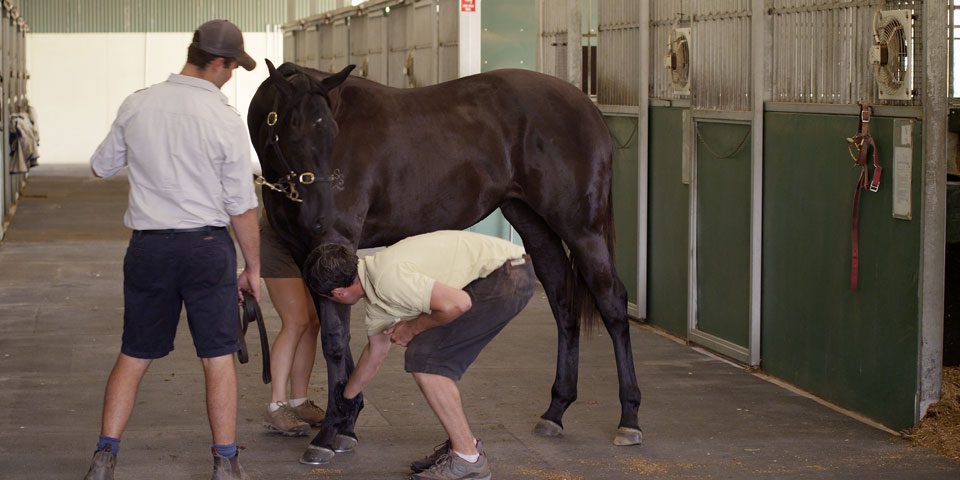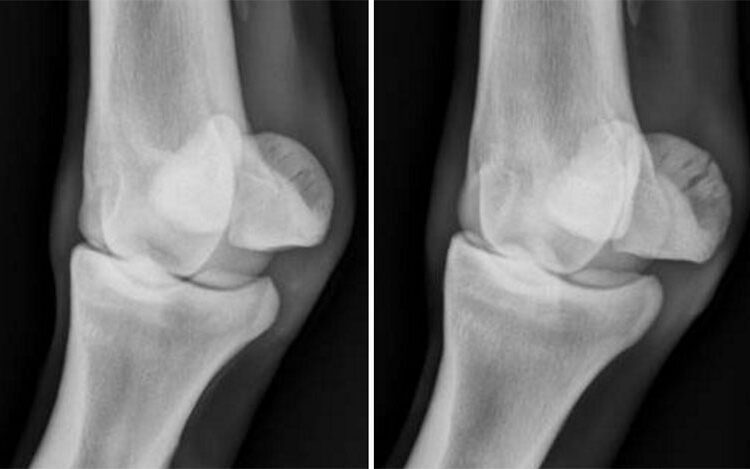Sesamoiditis – What does it mean? Following on from the last two articles on lameness in yearlings this article will focus on the complex condition called Sesamoiditis.
A sesamoid is a bone that lies within a ligamentous or tendinous structure that crosses a joint. The most commonly recognised sesmoid bone is at the back of the fetlock joint. The navicular bone that lies within the foot or patella in the stifle is also a sesamoid bone. This bone is under extreme forces during fast work and a common cause of lameness. The lameness can be a result of “tearing” of the ligamentous attachment to the bone or due to fracture. Like any bone in the horse skeleton the sesamoid bone adapts to the forces placed on it during exercise and a balance between “conditioning” and injury must be achieved to maintain soundness.
When assessing yearling radiographs the significance of changes associated with the sesamoid bone can be difficult to determine. As with all radiographic findings an assessment of the significance of the changes should include an evaluation of the actual horse. When assessing yearling radiographs we are being asked to predict the likelihood of lameness and gathering of all available information is important to provide an informed opinion. However, it is the sesmoid bone that is often the culprit of differing opinions on yearling radiographs as many other factors, such as personal experience, training techniques and conformation can influence the ultimate opinion of risk.


